This post is also available in:
 French
French  Malagasy
Malagasy
Over the past 10 years, the number of fishers in Tsimipaika Bay, northwest Madagascar, has rapidly grown due to high levels of immigration from less productive fishing regions of the country. But this comes at a cost; mangroves are being cleared for charcoal production, and crab, shrimp and mackerel stocks are diminishing.
In 2018, communities in Tsimipaika came together to adopt a fisheries management plan to protect their ecosystems and preserve their livelihoods. This has meant focusing their efforts on temporary closures and permanent fishing reserves, protection and restoration of mangroves, and respect for minimum crab catch sizes.
In the centre of the bay, in the village of Ambolikapiky, Madame Véronique and Franklin Velotody have joined the local community management association, known as the Vondron’Olona Ifotony (VOI) Miezaka, which means “try”. They tell us what local solutions have been put in place for the survival of their marine ecosystems and therefore, their community.
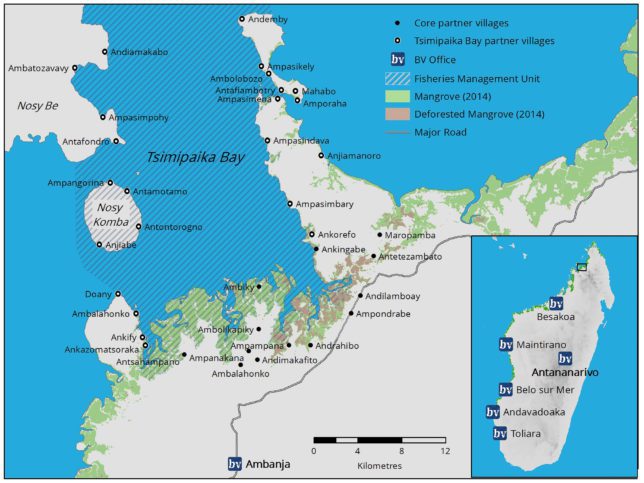
A map of Tsimipaika Bay | Photo: Blue Ventures
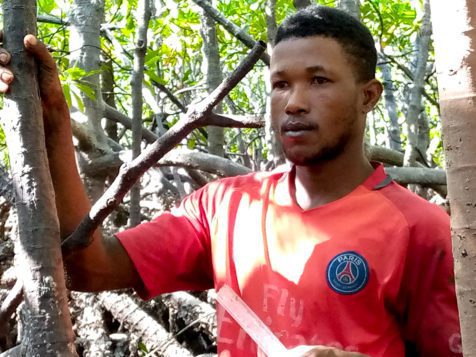
Franklin Velotody | Photo: Emilien Razafindrakoto
“My name is Franklin Velotody. I am a crab fisherman and a member of the VOI Miezaka. To preserve our crab stocks, we have a minimum catch size. In Ambolikapiky, the VOI and community watch patrols have informed the whole village about this, and now they are very strict about enforcing our dina (customary laws). Now, most fishers have stopped catching crabs under 11 cm – I can see this because I am also a data collector.
As a fisherman, I use the garigary [crab scale] now, which is a sustainable crab fishing gear that makes it easier to catch larger, good quality crabs. I learned how to make and use the garigary from fishers in a neighbouring VOI and then I trained fishers in my village to use it.
We are one of four villages in the bay to have established a permanent crab reserve, where crabs can breed and become more numerous. This increases our chances of catching more crabs nearby! The difficulty is that fishers from other villages sometimes come and fish here, but we’re working hard to raise awareness about the location and role of the permanent reserve.
Fishers in our village comply well with temporary fishery closures for mackerel. They know that these four-month closures allow the species to regenerate so that when the fishery is open, they can catch more fish. During the closures, they can still fish for marine and freshwater shrimp and fish around the mangroves.
Community savings groups have also been set up. When the fishery is closed, we can borrow from this fund and when the fishery is open, we can pay it back. We’ve also managed to save money through these groups.
The VOI has raised awareness in the village about the importance of mangrove reforestation and restoration. We can already see the results: the mangroves are growing well! Almost all the areas that were deforested because of illegal logging and charcoal production have been restored. Now that the mangroves are growing again, I hope that the crab stocks will return to the level it was before, and the same for the shrimp.
With the garigary, the permanent reserves, the crab closures and especially the VOI surveillance patrols, things have really changed. Before, I could only catch three crabs a day. Now I can catch seven big crabs!”
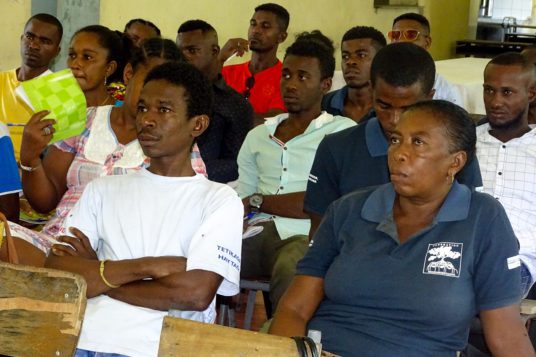
Madame Veronique (right in navy top) | Photo: Blue Ventures
“My name is Véronique. I run a small street restaurant in Ambolikapiky and I grow rice. I am also involved in the VOI Miezaka. In 2019, in collaboration with the neighbouring VOI of Ampanakana, we caught a fish trader collecting crabs during the closure. We informed the Fisheries Department who then came to the site and encouraged us to enforce the dina. The seized crabs were then released into the mangroves. This was a great success for us: in the eyes of the whole community, it showed that the VOIs are working together and that the Fisheries Department is supporting us.
Honestly, there are still fishers who don’t respect the minimum crab catch size. As soon as there are fewer controls, some fishers take small crabs because there is a collector in Ambanja who still buys them. But thanks to the garigary, things are changing. Instead of walking through the mangrove for hours to catch crabs of all sizes, fishers take their pirogue to set up and collect the garigary and catch only good quality, large crabs for a better selling price, and with less effort and time.
Ambolikapiky and three other villages in the bay have already set up a permanent crab reserve so that we can preserve the species. But we don’t have enough patrol members to patrol every day, so despite our efforts there are still fishers who enter the reserve to fish. One of the things we need to improve is to increase the number of patrol members.
For this and many other things, our association needs financial means, but it is already hard for some members to pay their annual subscription of 2,000 ariary (£0.38). So we informed the members of the 11 community savings groups in the village about the role of the VOI, and now they pay a subscription. In turn, the VOI has developed an annual work plan so that the savings groups know how their funds are being used. This helps us enormously in managing our fisheries!
The VOI is getting more self-sufficient in funding community surveillance patrols – this year the savings groups contributed 570,000 ariary (£108) – and fishers who are members of the savings groups are more aware of sustainable fishing practices. It has also broadened the support base of the VOI within the village as all savings group members are now VOI members too.
Now, many people are aware that the mangrove is a heritage to be preserved, and that reforestation will support fishing and improve incomes. So the community is really engaged in reforestation. The organisation of replanting sessions is much easier now there are community volunteers who lead and support each voluntary group in the village (including women’s groups, savings groups and schoolchildren) to define a calendar for the sessions and prepare the mangrove seeds. Everyone who takes part is always so happy to take stock of the area they have reforested and the total number of seeds they have planted after each session.
The VOI members have organised many community meetings so that everyone understands the dina on mangroves. We showed where the permanent reserve zones, the reforestation zones and the community use zones are located. We explained to everyone how to submit a cutting request to take timber from the community use zones. These zones have helped us a lot, as they make sure that we can use our natural resources to meet our needs, such as cutting timber for construction, but in a sustainable way. In our meetings, we also detailed what is prohibited in each zone and planned weekly patrols; whilst we still don’t have enough patrol officers right now, the number of violations related to illegal cutting has really decreased!
Finally, we have a mangrove club where children learn about the value of mangroves and their role in fisheries. In this way, they are already preparing to continue what we adults are starting to do.”
Read more about community governance in northwest Madagascar


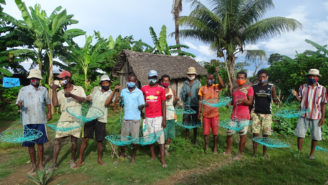
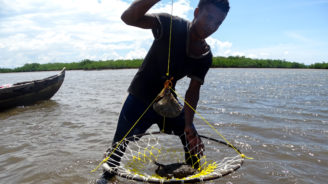
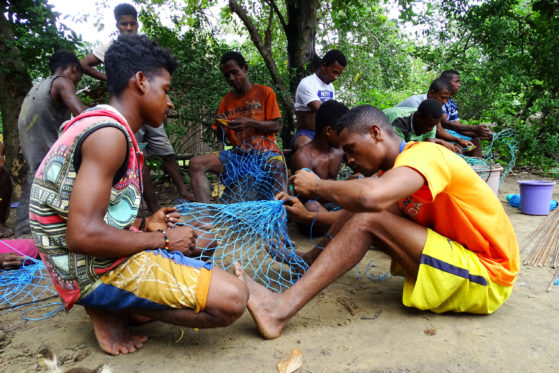
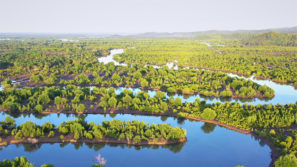
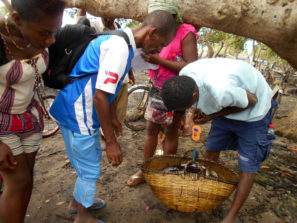
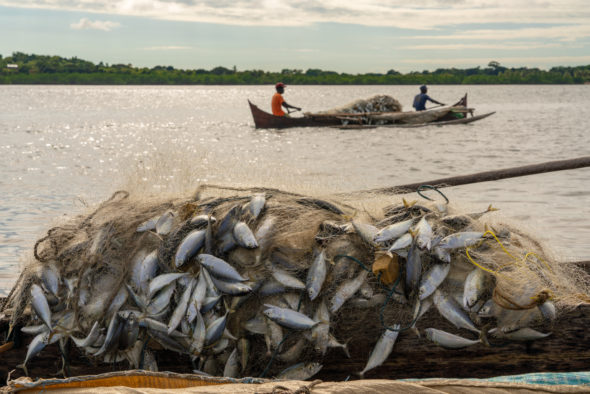
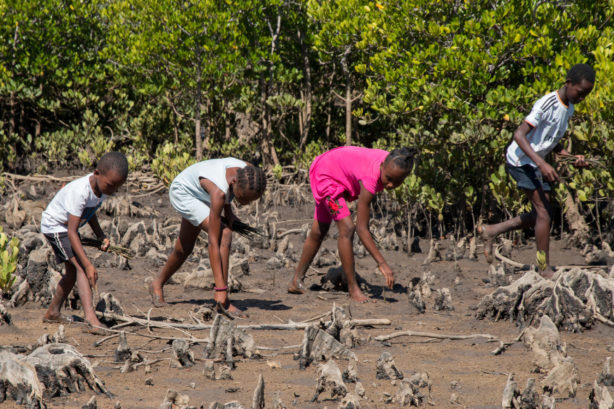
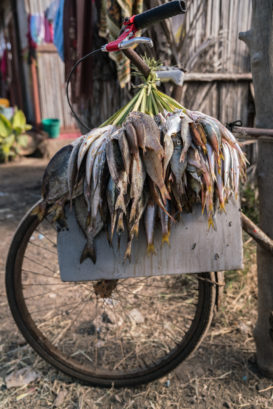
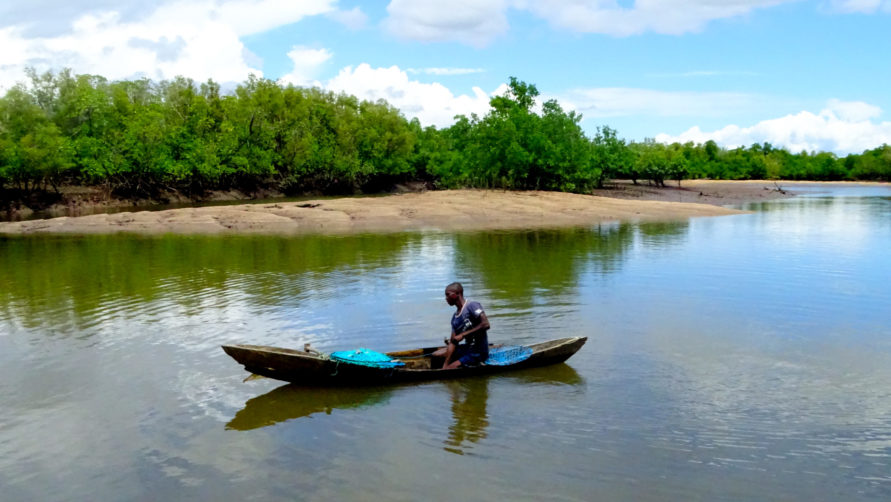
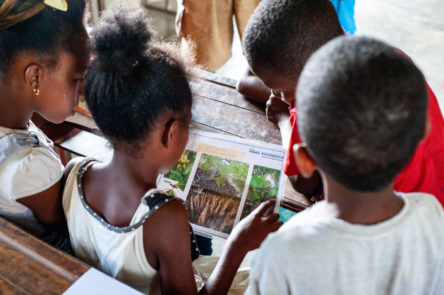
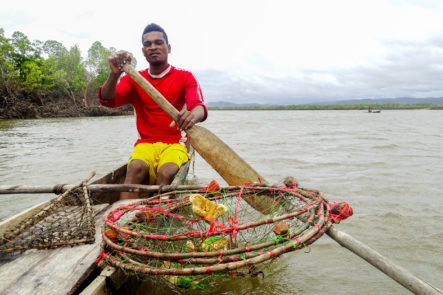
This community has really come together to create a better future for itself!! Reading this post makes me hopeful about All the fishing communities in Madagascar that learn and teach the value of resource conservation and community power.